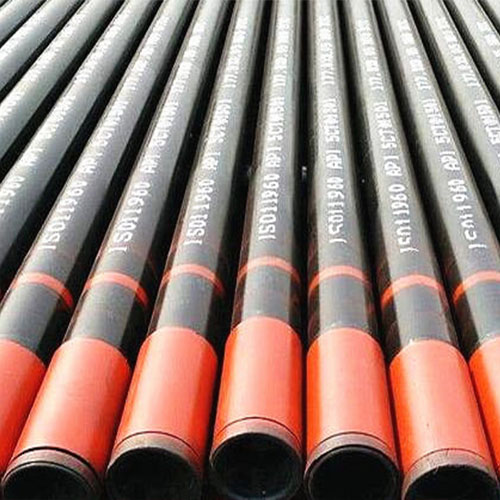Table of Contents
Importance of Understanding Weight Calculations for Galvanized Pipes
Galvanized pipes are a common choice for various construction and plumbing projects due to their durability and resistance to corrosion. When working with galvanized pipes, it is essential to understand weight calculations to ensure the proper handling and installation of these pipes. Weight calculations play a crucial role in determining the load-bearing capacity of structures, estimating material costs, and ensuring the Safety of the overall project.
One of the key factors to consider when working with galvanized pipes is the weight of the pipes themselves. The weight of a galvanized pipe is determined by its dimensions, including the diameter and wall thickness. The weight of the pipe is typically measured in pounds per foot or kilograms per meter. By calculating the weight of the pipes, contractors and engineers can determine the amount of support needed for the pipes and ensure that they are installed correctly to prevent any structural issues.
In addition to the weight of the pipes, it is also important to consider the weight of any additional components that will be attached to the pipes, such as fittings, Valves, and supports. These additional components can add significant weight to the overall system and must be taken into account when calculating the total weight of the installation. By accurately calculating the total weight of the system, contractors can ensure that the supporting structures are designed to handle the load and prevent any potential failures.
Another important aspect of weight calculations for galvanized pipes is estimating material costs. The weight of the pipes directly impacts the amount of material needed for a project, which in turn affects the overall cost. By accurately calculating the weight of the pipes and any additional components, contractors can estimate the amount of material required and budget accordingly. This helps prevent cost overruns and ensures that the project stays within budget.
Furthermore, understanding weight calculations for galvanized pipes is essential for ensuring the safety of the project. Overestimating or underestimating the weight of the pipes can Lead to structural failures, leaks, and other issues that can compromise the integrity of the system. By accurately calculating the weight of the pipes and designing the supporting structures accordingly, contractors can ensure that the project meets safety standards and regulations.

In conclusion, understanding weight calculations for galvanized pipes is crucial for the success of any construction or plumbing project. By accurately calculating the weight of the pipes, estimating material costs, and ensuring the safety of the installation, contractors can ensure that the project is completed on time, within budget, and to the highest standards of quality. Weight calculations may seem like a small detail, but they play a significant role in the overall success of a project. By paying attention to these calculations and taking the time to ensure their accuracy, contractors can avoid costly mistakes and ensure the long-term durability of the system.
How to Calculate the Weight of Galvanized Pipes
Galvanized pipes are commonly used in various industries for their durability and resistance to corrosion. When working with galvanized pipes, it is important to understand how to calculate their weight accurately. By knowing the weight of the pipes, you can determine the amount of material needed for a project, estimate shipping costs, and ensure proper handling and storage.
To calculate the weight of a galvanized pipe, you will need to know the dimensions of the pipe, specifically its length and diameter. The weight of a pipe is typically measured in pounds per foot, so having accurate measurements is crucial for an accurate calculation.
The first step in calculating the weight of a galvanized pipe is to determine the volume of the pipe. This can be done by multiplying the cross-sectional area of the pipe by its length. The cross-sectional area of a pipe can be calculated using the formula A = \\u03c0r^2, where r is the radius of the pipe. Once you have the cross-sectional area, you can multiply it by the length of the pipe to find the volume.
Next, you will need to determine the density of the material used to make the pipe. Galvanized pipes are typically made of steel, which has a density of around 490 pounds per cubic foot. By multiplying the volume of the pipe by the density of steel, you can calculate the weight of the pipe.
It is important to note that the weight of a galvanized pipe can vary depending on the thickness of the galvanized coating. Thicker coatings will add more weight to the pipe, so it is important to take this into account when calculating the weight.
Transitional phrases such as “next,” “once you have,” and “it is important to note” can help guide the reader through the calculation process. These phrases help to connect one step to the next, making it easier for the reader to follow along and understand the process.
In addition to calculating the weight of a single pipe, you may also need to calculate the weight of a bundle of pipes. This can be done by multiplying the weight of a single pipe by the number of pipes in the bundle. By knowing the weight of a bundle of pipes, you can accurately estimate the total weight of a shipment and ensure that proper handling and storage procedures are followed.

Understanding how to calculate the weight of galvanized pipes is essential for anyone working with these materials. By following the steps outlined above and using the appropriate formulas, you can accurately determine the weight of a single pipe or a bundle of pipes. This knowledge will not only help you plan and budget for your projects but also ensure the safe and efficient handling of galvanized pipes.

